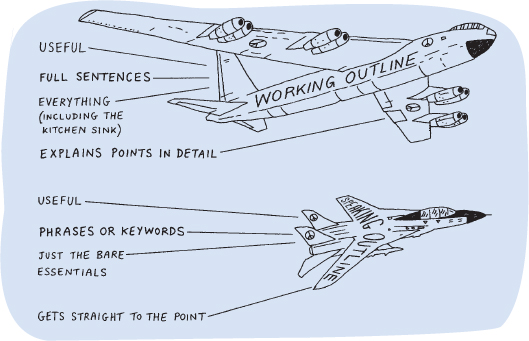TWO STAGES OF OUTLINING
Printed Page 308
Imagine that you’re about to set off on a car trip to a place you’ve never been before. Unless you have GPS and can just type in the address, there are two steps you would probably take before you set out. First, you’d likely consult a road map or an online mapping site to assess where you’d need to go, how you’d get there, and how long it would take. You’d study the map, committing the general picture to memory and figuring out any tricky portions. Second, you’d work on distilling all that you’d learned from the detailed map into a very brief set of directions (take this highway to that exit, turn right at second light) that you could quickly glance at while driving.
In much the same way as you’d take these two steps to ensure a safe journey, many speech instructors suggest taking two steps when outlining your speech. In fact, many instructors require two versions of your outline for each presentation. The first is usually known as a working outline, which functions like a road map to help you prepare your speech. The second is known as a speaking outline, which, like a brief set of directions, provides you with quick and easy-to-follow notes you can refer to without really “taking your eyes off the road”—or, in this case, your audience. In this section, we take a look at these two types of outlines, each of which represents an important step in the development of your presentation. But before we move forward, we wish to emphasize that it’s essential for you to check with your speech instructor on his or her requirements for outlining in your speech course. Individual instructors have different philosophies about and requirements for creating outlines, so be sure that what you do aligns with your particular instructor’s expectations.
